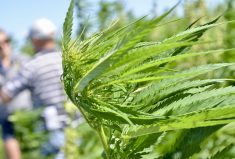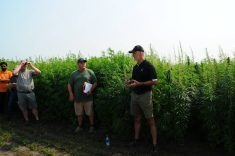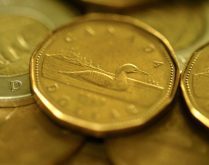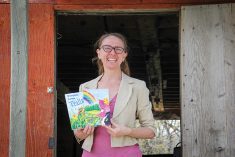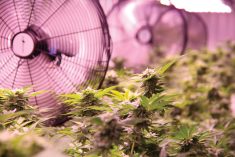A regulatory roadblock is about to disappear for hemp growers, but plenty of obstacles remain to capturing the nutraceutical market.
Until now they’ve been required to destroy parts of the plant that might have otherwise been harvested, but new regulations from Health Canada will be arriving along with cannabis legalization this fall.
They will then be able to sell plants for cannabidiol, a chemical usually extracted from medical marijuana and most famous for its use as an anti-convulsive.
Under the new regulations, hemp growers will no longer need to destroy leaves, branches and flowering heads, but will be able to sell them to a licensed processor, “to provide a source of low-THC, high-cannabidiol (CBD) cannabis products.”
Read Also

Manitoba canola industry has new frontiers
Canola oil is still the main priority for the sector, but canola meal is increasingly the subject of research looking for new markets and uses for the oilseed’s byproduct.
Federal guidelines require hemp to fall below 0.3 per cent THC, the chemical that causes the high in marijuana.
However, accessing these new markets may not be as simple as just diving in.
More to do
The change marks a win for the hemp sector, which has been arguing for access to the CBD market for years. But Keith Jones, vice-president of the Canadian Hemp Trade Alliance, says pushing changes back to October will lock out any producers wanting to jump into the CBD market this year. The federal government originally hoped to legalize cannabis and update hemp regulations by July.
This year’s licences don’t recognize the changes, Jones said, and any hemp coming up in the fields must be marketed by the old rules.
“The current cultivation licence prohibits harvesting those materials and actually requires all of the farmers to destroy those materials,” Jones said.
The Canadian Hemp Trade Alliance has asked for a transitional guidance from Health Canada so producers can market this year’s crop for CBD.
That might make little difference though, according to Chris Dzisiak, chair of the Parkland Industrial Hemp Growers co-op, although he noted that a handful of marijuana companies have expressed interest.
Dzisiak estimates it will take at least a year, and perhaps two, to start harvesting for CBD on a large scale.
“You’re going to have to have a harvesting process that’s continuous,” he said. “You’ve got to have large, continuous, high-volume dryers. There’s a huge amount of infrastructure that has to go in before anybody’s doing any field-scale harvesting of plant material to get CBD.”
The hemp farmer said there will be a steep learning curve just to figure out how to grow the crop for CBD, although producers have been growing hemp in Manitoba since the ’90s.
Hemp in Manitoba is largely grown for grain, but Dzisiak says that hemp for CBD will likely have to be harvested greener to get the maximum concentration.
Infancy
Large-scale processing is another question mark, he added, and there is little consensus on the best way to extract CBD from a full field’s worth of hemp and little ability for experimentation, given the current legal framework.
A newly opened CBD market also brings new questions on genetics, should producers start to demand varieties tailored for the nutraceutical market.
“Do you need a three per cent or do you need a seven per cent CBD to be able to harvest it effectively and bring it home?” Dzisiak posed. “We’re in our infancy on the whole thing. Can you go out there and harvest individual plants and dry them the way you would tobacco and extract CBD? Absolutely, but what’s the cost of that versus field-scale harvesting?”
Those questions extend to dual-purpose varieties.
CBD harvest might align closely with timing for higher-quality fibre, Dzisiak said, although he suspects that a fibre-only variety might have lower concentrations of CBD.
“If you have a fibre-only variety, you don’t get very much grain from it,” he said. “There seems to be a bit of a trade-off between fibre growth and seed set.”
New rules
Producers will be able to harvest CBD with their regular licence, Health Canada confirmed.
“No additional special licence is required,” an agency spokesperson said in an emailed statement. “However, licence holders will be required to keep records of who they are selling to.”
Growers must record the name, address and licence number of anyone buying flowering heads, branches or leaves (on top of general records which mark how much hemp from each cultivar is seeded, delivery dates and transport information), while buyers must also record the date and quantity of each form of hemp involved in the sale. All records must be kept for at least a year.
Jones also pointed out changes that further relax regulations on hemp.
Health Canada already eased regulations on THC testing and GPS reporting in 2016, along with the launch of an extended licence period that the hemp sector said added flexibility and troubleshot licensing backlogs.
New regulations, however, also do away with the requirement for a criminal record check, double the reporting period to 30 days after seeding, and, for the first time, will allow producers to store grain or fibre in an unlocked location.
“There’s a lot of really good things in the new (regulations),” Jones said. “The one glitch is related to the timing and so, hopefully, we’ll be able to see some sort of special guidance on that here before harvest really gets started. If we don’t get a special guidance, unfortunately, we’ll lose the entire year of 2018 and, of course, we’re advising farmers not to do anything that would violate their current industrial hemp cultivation licence because, with the new Cannabis Act coming in, there’s likely to be a very high level of enforcement.”
Jones further cautioned growers to double-check a buyer’s regulatory status, since the branches, leaves and flowering heads may only be sold to another licence holder under the cannabis regulations.








